Snakes and monsters of Russian epics
In this case, epic plots are often intertwined with fabulous: in Russian folk tales like Snakes are also opponents of the heroes, only the epic heroes are fighting with them.
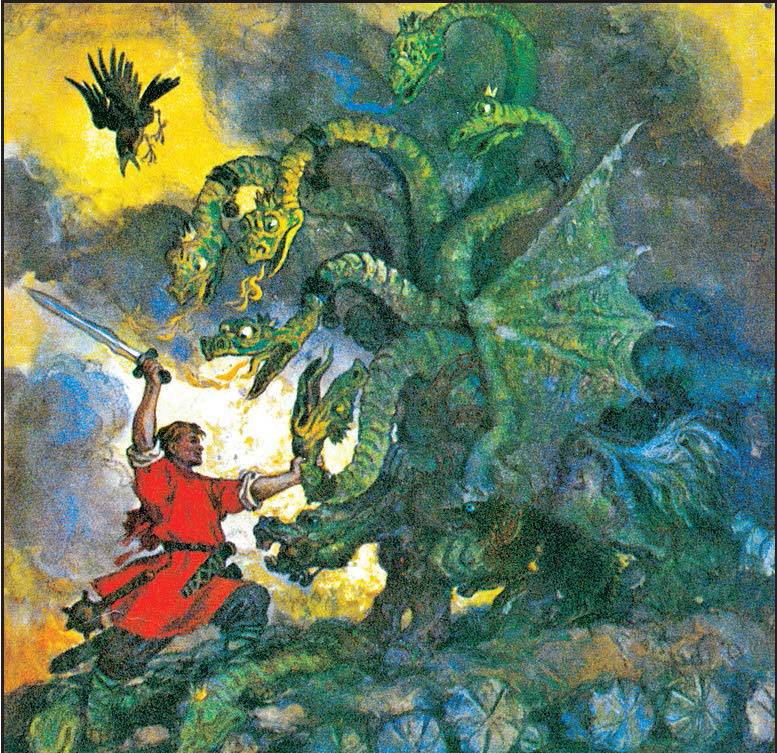
Snakes and Lizards in Russian Chronicles and Aliens Notes
The most interesting thing is that references to all kinds of snakes and lizards can be found in some chronicle sources. So, in one of the chronicles under 1092, it was recorded:
In this case, we probably have a description of the flight of a large meteorite - car.
But in the "Tale of Slovenia and Ruse" (the initial part of the patriarchal chronicle of the "Legend of the beginning of Ruski land and the creation of Novagrad and where the family of Slovenian princes comes from," dated the second half of the XVII century), everything is much more complicated and fabulous. It tells about some tribal leaders Sloven and Ruse, about sister Rusa - Ilmer, in whose honor Lake Ilmen was named, reports about the founding of the city of Slovensk Velikiy, the predecessor of Novgorod, on the bank of the “muddy” Volkhov River. But in this case, we are more interested in information about the elder son of Sloven, the Volkha, the “pleasing sorcerer,” who could turn into some kind of lizard, devouring people who did not agree to worship him. Locals called him "the god of existence" and sacrificed black hens, and in a special case - even girls. After the death of this strange prince, he was buried with great honor under a high mound, but the earth fell beneath him, leaving a deep pit, which for a long time remained uncharged.
Old Russian korkodily: horses covered with bark
Modern researchers associate this legend with numerous testimonies of the famous “cortices” that appeared in Northern Russia and neighboring Lithuania even in the 17th century (these creatures had nothing to do with crocodiles, the literal translation is “a horse covered in bark”).
The letter of commendation to Roman Galitsky (Galician-Volyn chronicle, entry under 1200) states:
And in the Pskov Chronicle under the year 1582 you can read:
In the same century, Sigismund von Herberstein in his Notes on Muscovy reported that he had met in Lithuania "idol worshipers" who "feed at home, like penates (domestic spirits), some snakes with four short legs like lizards with black and a fat body, having no more than a 3 span and is called a givoit. In the days that were laid, people cleanse their home and with some fear, with the whole family worship them reverently, crawling out to the food supplied. Disasters are attributed to the fact that the serpent deity was poorly fed. ”
Jerome Horsey (Sir Jerome Horsey), a merchant and diplomat who lived in Russia in the second half of the XVII century, wrote in Notes on Russia:
The manuscript of the Great Synodal Library says that a “damned creature” was caught in Volkhov, which the local pagans (it’s about the 17th century!) Was buried in a “high grave” (kurgan), and then they celebrated a trifle.
And even at the beginning of the XVIII century in the Arzamas city archive there is an interesting entry:
According to the description compiled by Zemstvo commissioner Vasily Shtykov, this “snake” had short legs and a huge mouth full of sharp teeth. Apparently, the monster did not reach Petersburg, no traces of the Arzamas "snake" were detected anymore.
Serpent as the ancestor of the hero
Now back to the epic and see what information about the Snakes tell storytellers.
In the epic Volk Vseslav'evich, the Serpent is represented as the father of the protagonist:
I went-walked the young princess
Marfa Vseslavovna -
Has come on a serpent fierce.
A fierce serpent wrapped
About chaebot green morocco,
About silk stocking,
The trunk (this tail) has on the white thighs
That sometimes the princess conceived,
Has conceived and in due time has given birth.
It is not surprising that the hero born of Snake turned out to be not just a hero, but a werewolf:
Volk learned many wisdom:
Pike-rybyu walk
Volhu over the blue seas,
Gray wolf scouring dark forests
A roundabout-golden horns scouring the field,
A clear falcon to fly under the cloud.
Most researchers relate this hero to the Polotsk prince Vseslav, who, according to some chroniclers, was born from “magic,” and in the year of his birth there was “the sign of Zmievo in heaven” in Russia.
More information about this prince is described in the article. Heroes of epics and their possible prototypes.
Snake Tugarin
If we read into the epic texts, we immediately notice that calling the opponents of the heroes Snakes (or Zmeevichs), talking about numerous heads and "trunks" (meaning tails), narrators hereinafter describe them as ordinary, though very large and strong people.
Here, for example, as described by the Serpent-Tugarin (in other versions - Tugarin Zmeevich):
Tugarin is exactly going, not crawling, but let's say that he is a lizard, and he has paws.
However, it is further reported that "between the shoulders of his oblique sazhen".
Later:
Yes, she puts the princess on her knees.
Agree, even the lizard make it difficult.
In turn, Princess Apraksa says:
With dear friend Snake-Gorynychem! ”
But we know that the “guest” of Prince Vladimir is Tugarin. Consequently, the Serpent Gorynych, in this case - this is a title (and Zmeevich, respectively, should mean the prince).
In the future, we learn that in a duel with Alyosha Popovich Snake-Tugarin rides on a horse. Here is how one of the illustrators tried to resolve this contradiction:
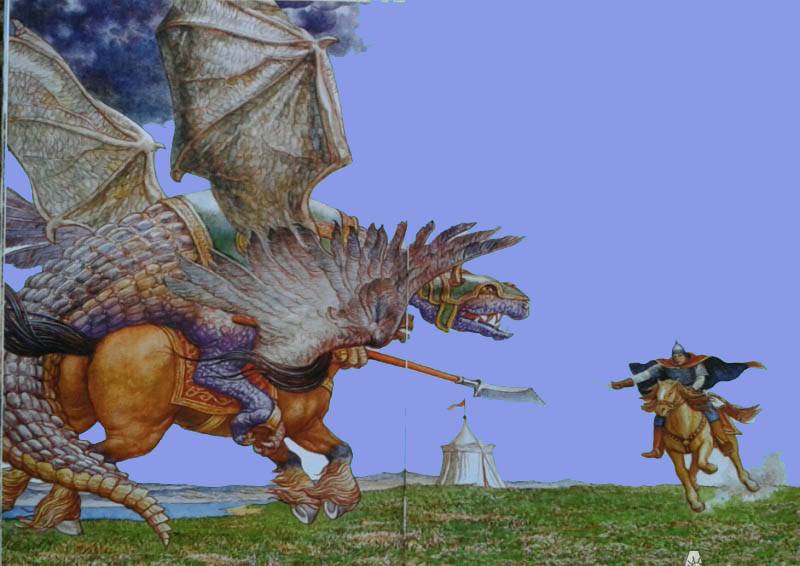
We see a winged pangolin, and in fact in a number of records of this epic it is reported that the wings were not at Tugarin, but at his horse (such an ancient Russian Bellerophon with Pegasus). These illustrations look much more believable:
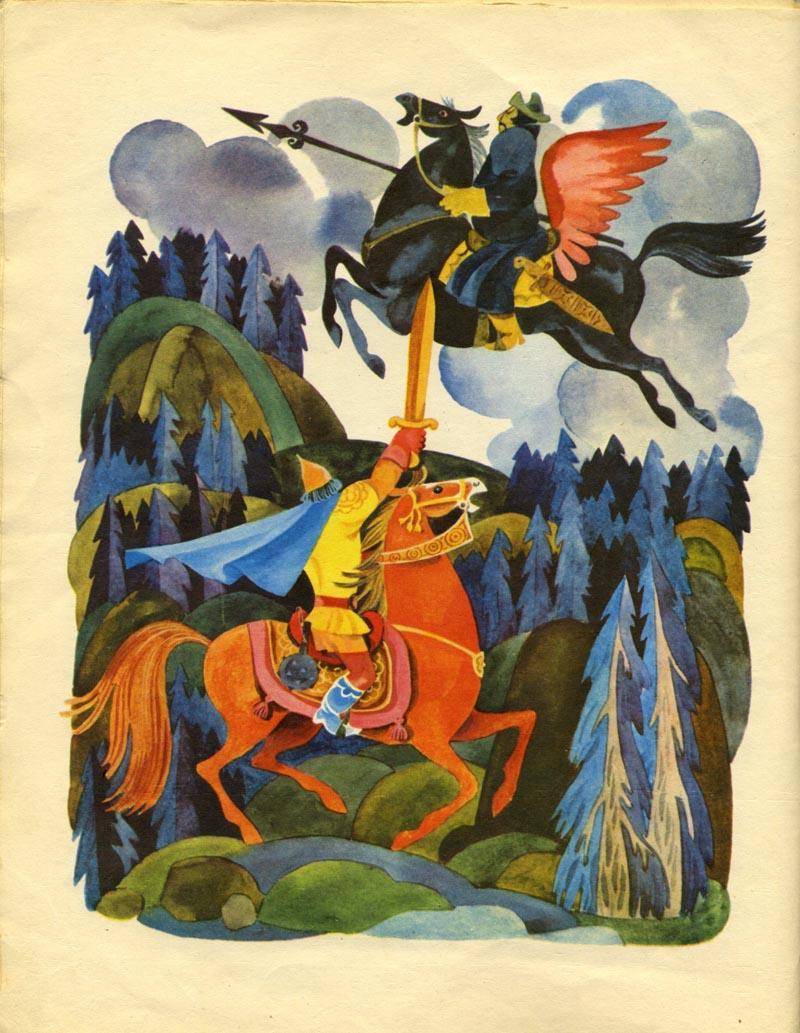
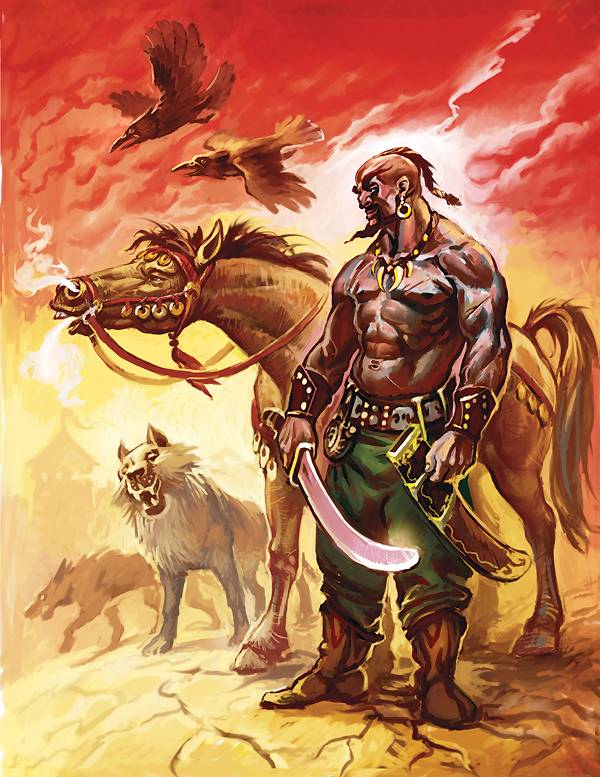
Many researchers viewed the epic Serpents as the embodiment of an enemy army, each head of such a Serpent, in their opinion, means tumen or darkness - 10 000 enemy warriors. S. Pletnev believed that the Polovtsians were originally the serpents of Russian epics. In the article Heroes of epics and their possible prototypes We have already said that the epics, in which we are talking about the struggle of the Russian warriors with snakes, can in a veiled form tell about the wars with the nomadic Polovtsi. At the head of the Polovtsian Union stood the tribe "Kai", whose name translates as "snake". Arab and Chinese authors, speaking repeatedly of the Kipchaks-Polovtsi, use the saying “there are seven heads of a snake” (according to the number of main tribes) - this is the possible clue to the many-headedness of Russian Serpent Serpents. And the Russian chroniclers seemed to know about this: the victory of Vladimir Monomakh over the Polovtsi in 1103 says:
Vsevolod Miller first suggested that under the name "Tugarin" Russian epics hiding Polovtsian Khan Tugorkan. His duel with Alyosha Popovich, in the opinion of this author, serves as a memory of the victory over the Polovtsi in Pereyaslavl in 1096 year. Then Russian troops were commanded by Vladimir Monomakh (Pereyaslavsky Prince) and Svyatopolk Izyaslavich (Prince of Kiev). Tugorkan Svyatopolk, who was killed in a battle, ordered to bury "aces of the truth of his own" near Kiev.
Snake Gorynych Russian epics
By the way, in the epic of Dobrynya Nikitich we learn that Snake Gorynych is a Christian! Alyosha Popovich says to Prince Vladimir:
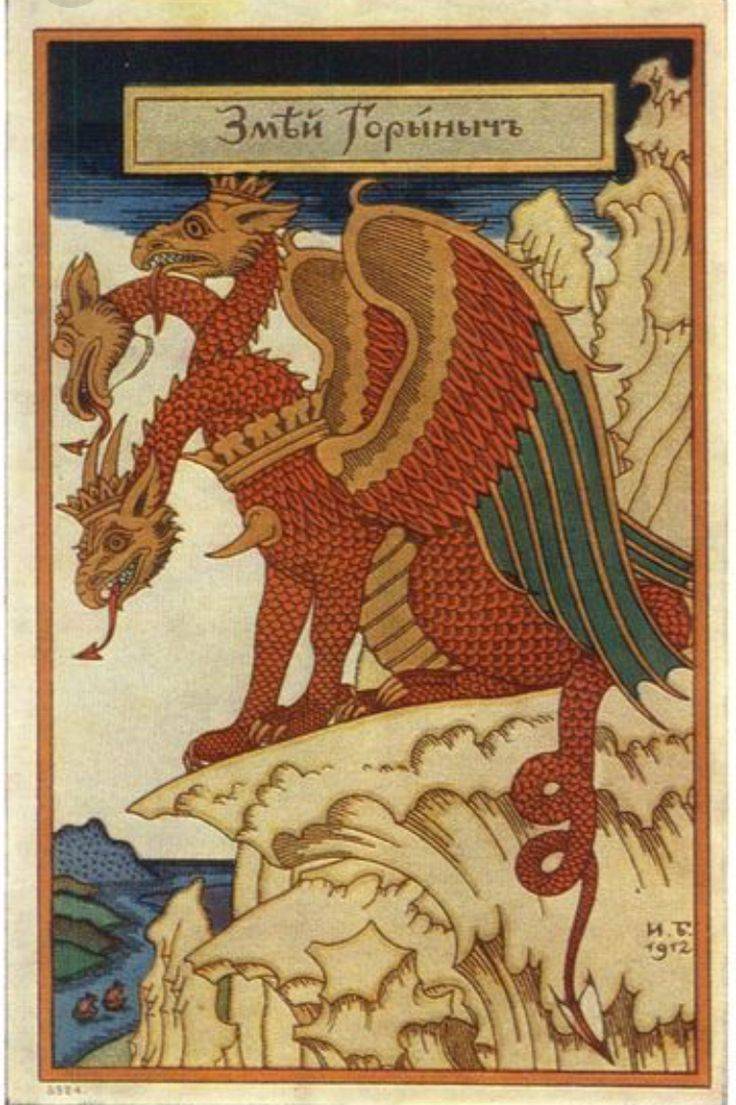
Who and how could baptize the prehistoric reptile? Until this, even the creators of the mediocre modern cartoons "about the heroes", have not yet thought of. But the Polovtsian khans sometimes were baptized. And even the eldest son of Batu Khan, Sartak (sister of Alexander Nevsky) was a Christian (apparently of the Nestorian persuasion).
In the same epic, the Serpent (often the Serpent, as in the following passage) offers Dobryna to conclude a real diplomatic agreement:
You - do not ride now on the mountain Sorochinskaya,
Do not trample here the little serpents,
Do not help out full of Russian;
And I'll give you a smaller sister, -
I do not fly yes to Holy Russia,
And not to take more full of Russian ”.
It is difficult to expect this from some kind of reptile. But if such an initiative comes from one of the Polovtsian princes, everything falls into place.
Bylina "About Dobrynya and the Serpent"
Now it's time to tell more about the epic “About Dobryna and the Serpent,” which is one of the most common Russian epic songs - more than 60 of her records are known. Moreover, the beginning of this epic is part of a song that was not part of the Kiev cycle: Dobrynya accomplishes his first feat (meeting the Serpent on the Pucha-river) not on the orders of the Kiev prince, his starting point is Ryazan, and he also returns to Ryazan.
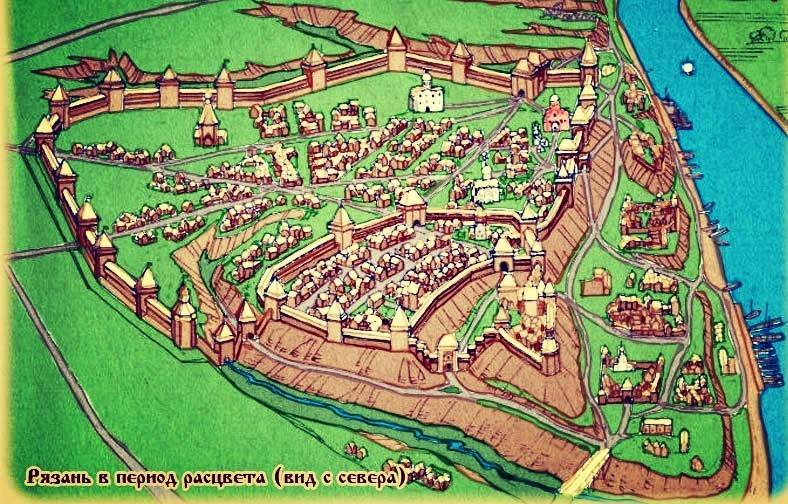
The antiquity of events is sometimes emphasized by narrators:
But in the second part, the hero is already in Kiev. And Snake Gorynych still did not fulfill his promise, and flew to Russia. But now he was abducted not by a simple girl, but by the niece of the Kiev prince, Zabava Putyatichna.
Vladimir learns about it at a feast: everything is as usual - indeed, where else would the prince of Kiev be, according to the narrators? He appeals to those present warriors with a proposal to go in search of fun. The heroes of the special enthusiasm do not show, and then Vladimir directly refers to Alyosha Popovich:
Mosh do you get from us Fun daughter Potyachichnu
From that was a cave of a snake? "
Alyosha does not want to fight the Serpent either, but he knows who to send there:
I heard it was this light
Dobrynyushka snake cross brother;
Will give here the damn snake
Young Dobrynyushka Nikitich
Without a fight, without a fight bloodshed
There and then Nun Amusing Potyatchnu's daughter. ”
The prince, who had just been so courteous and gentle with other warriors, not even daring to order them directly, addresses Dobryna in an unusually stern manner:
Yes, from that was a cave-snake.
You will not get Fun Potyatichnaya's daughter,
I will order you, Dobrynya, to chop the head. ”
In this regard, it is time to talk about the origin of the hero. There is no consensus here. Often, narrators say that Dobrynia's father is a certain merchant. But in two epic entries about the battle of Dobrynya and Ilya Muromets and in one epic entry about Dobrynya and Alyosha Popovich it is said that the mother of this bogatyr was a princess. However, Dobrynya himself says the Putyatina, saved by him:
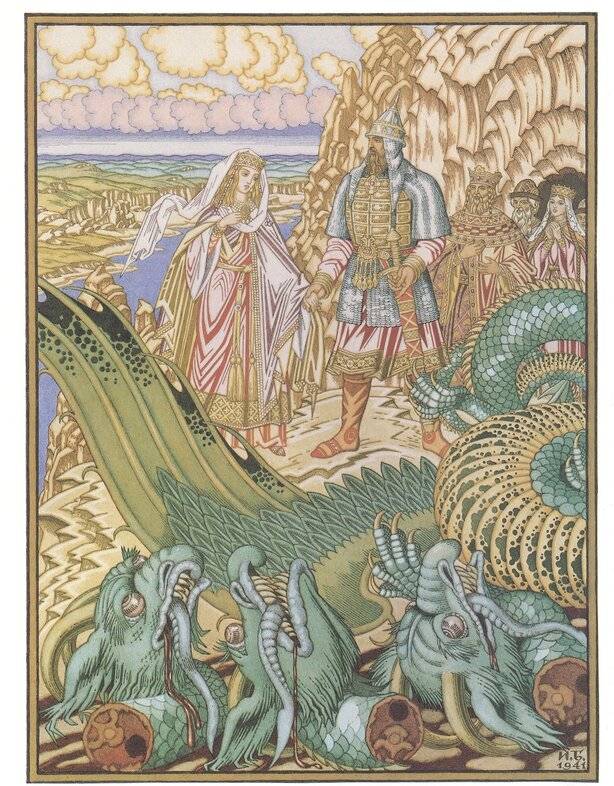
Since Zabava is clearly not a Muslim or a pagan, these words can only be interpreted as a recognition of a hero in a peasant background. Indirect confirmation can serve as information that Dobrynya does not receive any reward for the release of the niece of the prince. Contrary to tradition, the hero does not marry the girl freed by him, the prince does not suit him a solemn meeting, does not favor gold, silver, pearls - the epic usually ends with the return of Dobrynya pouring a horse into the horse, while he himself goes to bed. Probably, Prince Vladimir, who first learned about Dobryn, still treats him as a commoner servant, and is not ready to accept him as a hero. Only in some embodiments, Vladimir gives a feast in honor of the hero, which can be considered a kind of ritual for the recognition of Dobrynia as a member of the princely squad.
There is also other circumstantial evidence of Dobryni’s ignorance. So, during the first meeting with the Serpent, he, for some reason, turns out to be unarmed - neither a sword, nor a shield, nor a spear. And he has to use the "cap of the land of the Greek."
In fact, the battle did not take place in the river, Dobrynya managed to go ashore, and where is his heroic weapon? Some storytellers are trying to get out of the situation, saying that the horse with arms ran away. But, was Dobrynya really so careless that he didn't even tie him up?
By the way, about the "cap of the land of the Greek": what is it, and how did it look? The most reliable version is the headdress of Christian pilgrims, which had the shape of a bell. Pilgrims often sewed sea shells on this hat: in this case, the blow, indeed, could be very tangible and painful. But Dobrynya, apparently, uses an ordinary hat, which is stuffed with sand: "He nagreb hat sand sand of yellow."
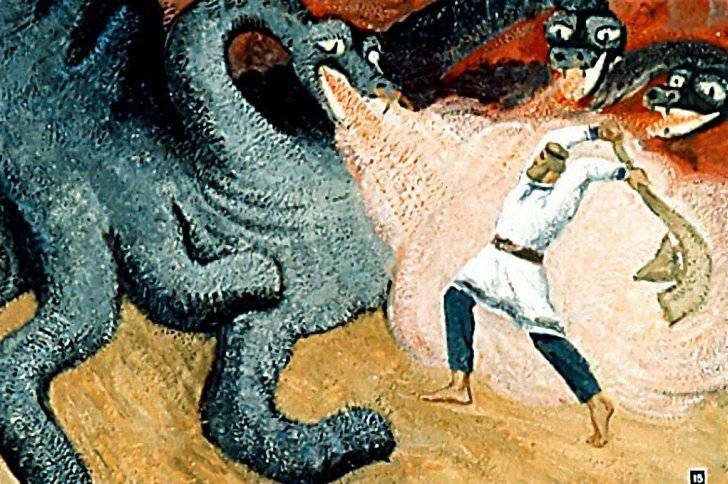
There is another version of the "Greek hat" - the helmet, which is sometimes called the Greek cap.
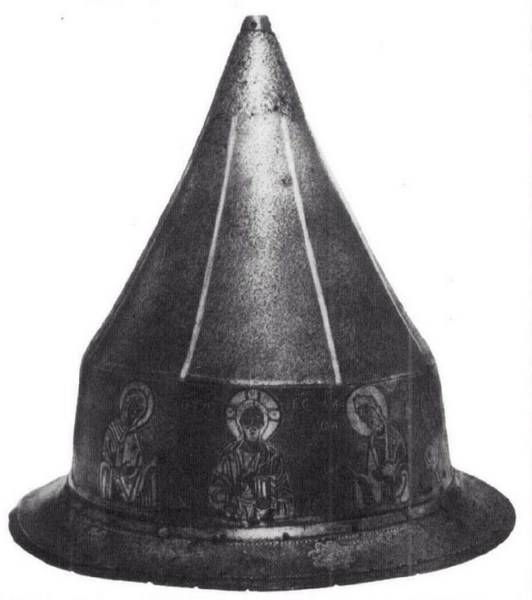
But to wield such a helmet full of sand is not very convenient. Is that like this: as a throwing projectile - one-time:
But back to the instructions of the prince - to bring home Fun Putyatichnu. Later it turns out that a huge number of both Russian and foreign captives languished in the “holes of the snake”. But they are not interested in the Kiev prince: if the Serpent agrees to give his niece, let them remain in these holes. And the narrators do not condemn Vladimir at all, not finding anything special in such an attitude to their fellow tribesmen.
And what about Dobrynya? Bylinas report that, having learned about the princely order, he suddenly "twirled, grieved." Why? Scared to meet again with the Serpent? The narrators pass on the Dobrian mother's complaint:
Vladimir Solnyshko stolnokievskiy, -
And to get was Fun daughter Potiatichnu
And from that was the cave of the serpent.
And Nun does not have a good horse,
But Nun doesn’t have Dobrynia spear
I have nothing to do with the Sorochinskaya mountain,
That snake was cursed now. ”
Dobrynia has neither a horse nor a weapon! It is clear now why for the first time he had to fight off with a hat. And the Kiev prince forever feasting did not even think of equipping his “conqueror”. And with what does Dobrynya go to the deadly battle, with what weapon?
Illustrators depict the second battle with the Serpent like this:
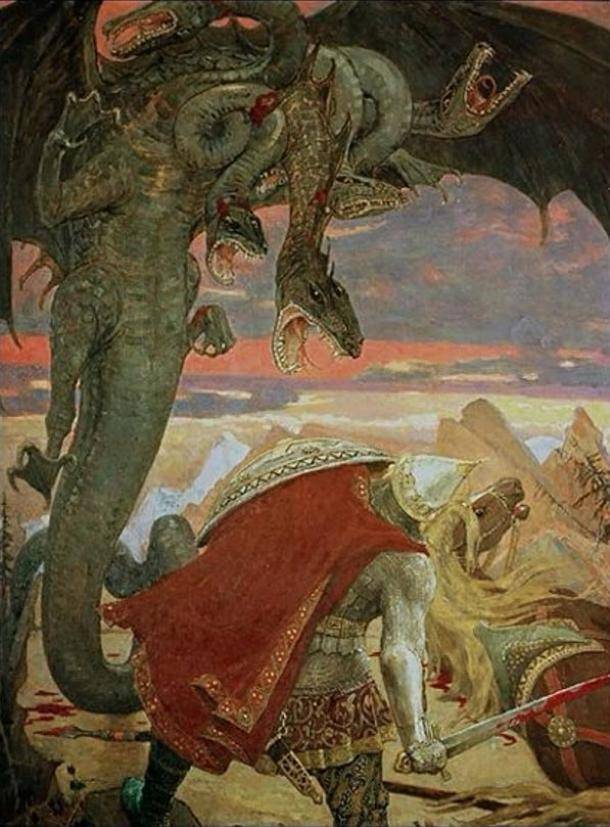
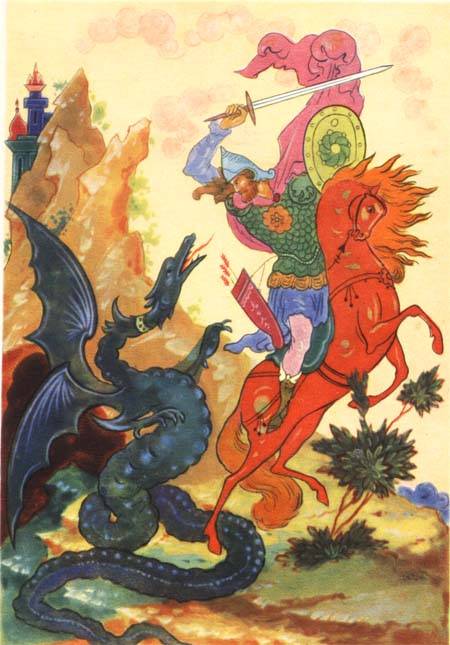
In fact, everything was different.
In the epic "Dobrynya and Marinka" (which is described in the article "Some sufferings from that love." Wives of Russian epic heroes) states that Dobrynia's mother was a witch (well, a sorceress). And here again we find confirmation of this fact, unexpected for many readers: the mother gives the bogatyr a magic handkerchief, wiping which restores strength, and a whip of seven silks - whip her horse “between the ears and between the legs” so that he drops the serpents from the hoofs and beat the main one Snake:
Ay reminded he parental punishment,
I took out the whip from the pickpocket.
Beats a snake and its whip.
Tamed by a snake like a cattle,
Aki skotininu yes krasiyanskaya.
The horse of Dobrynya, by the way, is also not at all combat: either the fathers, or even the grandfather, stood in a stable knee-deep in manure.
And now the serpent is defeated, its blood floods all around, but the earth does not accept it. Dobrynya strikes the ground with a spear (but not his own, about which nothing is said in the epic, but a trophy one - “basurman”), and the blood goes into the resulting hole.
Subsequently, Dobrynya becomes the second most important Russian bogatyr - either he won out, or later narrators “ennobled” his image, attributing boyar or even princely origin.
In the image of Dobrynya, in addition to courage and the strength of the heroic, "vegetation" is of paramount importance: he knows how to behave correctly in any circumstances, is portrayed by a person "polite" and courteous. Ilya Muromets says about him:
Therefore, in other epics, it is Dobrynya who often performs the diplomatic missions of Prince Vladimir.
Historians about the epic Serpent Gorynyche
But how did historians and researchers of Russian folklore interpret this epic?
Orest Miller, based on the fact that when 3 appears, Gorynych’s "like rain rains" and "like thunder rattles," suggested:
Vsevolod Miller considered Dobrynia bathing in the river as a symbol of baptism.
A. Markov later “clarified” that the first part of the epic tells of the baptism of Dobrynia and Kiev itself. And in the second part, in the opinion of this author, it is said about the forcible baptism of Novgorod, when "Putiata baptized with a sword, and Dobrynya with fire."
V. V. Stasov (the work “The Origin of the Epics”) compared Dobryni’s snake collection with the struggle of the Hindu god Krishna with the many-headed king of serpents, Kalia.
This is what is said in the Srimad Bhagavatam (Bhagavata Purana is the commentary on Vedanta-sutra), a Vedic work, the creation of which is attributed to Vyasadeva:
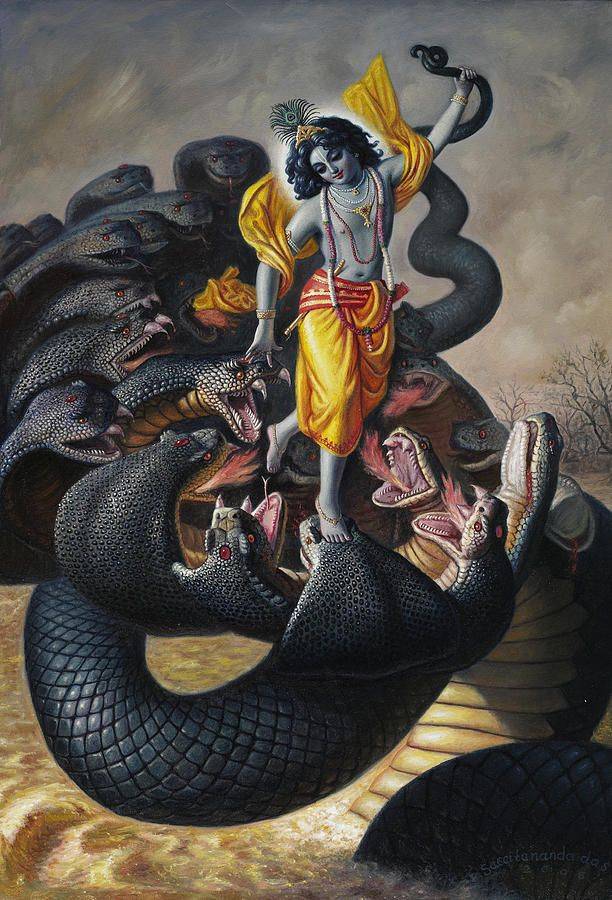
Then Kalia wrapped Krsna with rings, but:
A bit like Dobrynia's first fight with the Serpent, isn't it?
DS Likhachev, like many others, considered the Russian epic serpents a symbol of an external enemy.
Some historians believe that the songs about the battle between Alyosha Popovich and Tugarin are secondary to the epics about Dobryna. N. Dashkevich, for example, believed that
A. V. Rystenko also believed that "Tugarin" is not a name, but a collective image of the enemy, from the word "tug" - trouble. But under the influence of songs about Dobrynya, Tugarin "took the features of a snake."
Some researchers believe that under the guise of “The Serpent of the Cruel, the Serpent of Black, many-headed,” whose “one thousand heads, one thousand tails” hides Chernobog, who was also portrayed as a black man with a silver-plated mustache.
Later in the Russian fairy tales appears many-headed Miracle Yudo. Many believe that this is another name of the Serpent Gorynych.
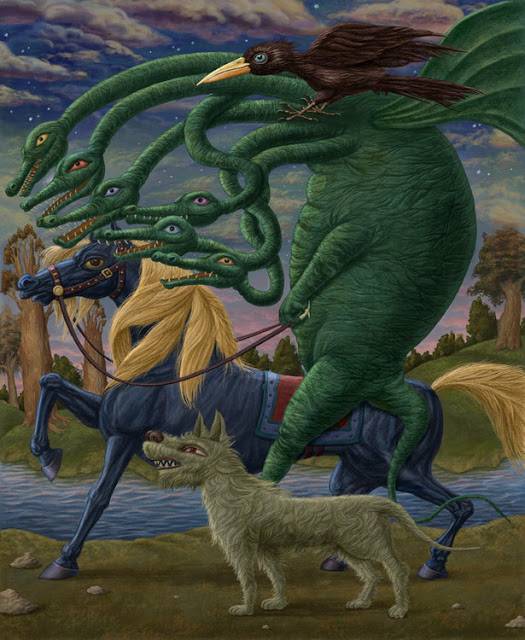
Other researchers, pointing out that the word “miracle” previously meant any giant (not necessarily snake-like), associate this character with the Idol of the Lamb.
Jan Usmoshvets as a possible prototype of Nikita Kozhemyaki
Another song of the Kiev cycle, in which we are talking about the competition of the hero with the Serpent, is the well-known epic "Nikita Kozhemyaka." The events described in it became the plot of Russian, Ukrainian and Belarusian fairy tales. In this epic, the next Snake kidnaps the princely (in fairy tales - the Tsar's) daughter and forcibly marries her. The hero who saves her is not a hero, but an ordinary artisan citizen: most often he is called kozhemyaka, but sometimes also a blacksmith or a successor. Since the forces of the Russian duel named Nikita (sometimes Ilya, Kirill or Kuzma) and the forces of the Serpent turn out to be equal, they divide the land. It is believed that in this way the epic explains the origin of the famous Serpentine ramparts, the creation of which the chronicles are silent - the Serpent ramparts are only mentioned in them, as already existing: valoma "and so on.
The prototype of the protagonist of the epic was a certain young man who defeated the Pecheneg bogatyr in 992 (Tale of Bygone Years, “The Legend of the Kozhemyak Youth). The similarity of the plots is obvious. Vladimir opposes the Pechenegs and meets them.
And broke up.
Vladimir, returning to his camp, sent the heralds around the camp, with the words:
And it was not found anywhere. The next morning, the Pechenegs arrived and brought their husband, but ours did not have one. And Vladimir began to humor, sending around his army, and one old husband came to the prince and said to him: "Prince! I have one son at home; I went out with four, and he stayed at home. Since childhood, no one left him I still scolded him, and he crushed his skin, so he got angry and tore the skin with his hands. " Having heard about it, the prince was delighted, and they sent for him, and they brought him to the prince, and the prince told him everything.
He replied: "Prince! I do not know if I can grab hold of him - test me: is there a big and strong bull?"
And they found a bull, big and strong, and ordered it to infuriate him; they placed a red-hot iron on him and let him go. And the bull ran past him, and grabbed the bull with his hand on its side and snatched the skin with meat, as much as his hand seized. And Vladimir said to him: "You can fight him."
The next morning, the Pechenegs came and began to call: "Is there a husband? Ours is ready!" Vladimir ordered to put on weapons on the same night, and both parties agreed. The Pechenegs released their husband: he was very big and terrible. And Vladimir’s husband came out and saw his pechenegs and laughed, for he was of medium height. And they measured the place between the two troops, and sent them against each other. And they grabbed, and began to firmly press each other, and strangled Pechenezhin hands to death. And threw him to the ground. There was a cry, and the Pechenegs ran, and the Russians pursued them, beating them, and chased them away. Vladimir, however, was delighted and laid the city at the ford, and called it Pereyaslavl, for the young man took over the glory. And Vladimir made him a great husband, and his father too ... "
The later Nikon's chronicle names the name of this young man: Jan Usmoshvets (“the one who sews the skin”).
Serpent Habitat
But where did the Russian epic snakes dwell? The narrators often report that the “Nora the Serpent” was “behind the uterus-Volga”. Sometimes a more precise location is indicated: “Mount Sorochinskaya” (from the name of the river, which is now called the Tsaritsa, this is the right tributary of the Volga, currently flows through the territory of modern Volgograd).
At the source of this river at the present time there is the Volgograd neighborhood “Gorky”, here there is Sorochinskaya street.
Source of the Tsaritsa River, Gorkovsky Village, Volgograd
Some epics say that the Serpent Gorynych guards Kalinov Bridge on the Tierra del Fuego, which many researchers consider to be the entrance to the world of the dead.
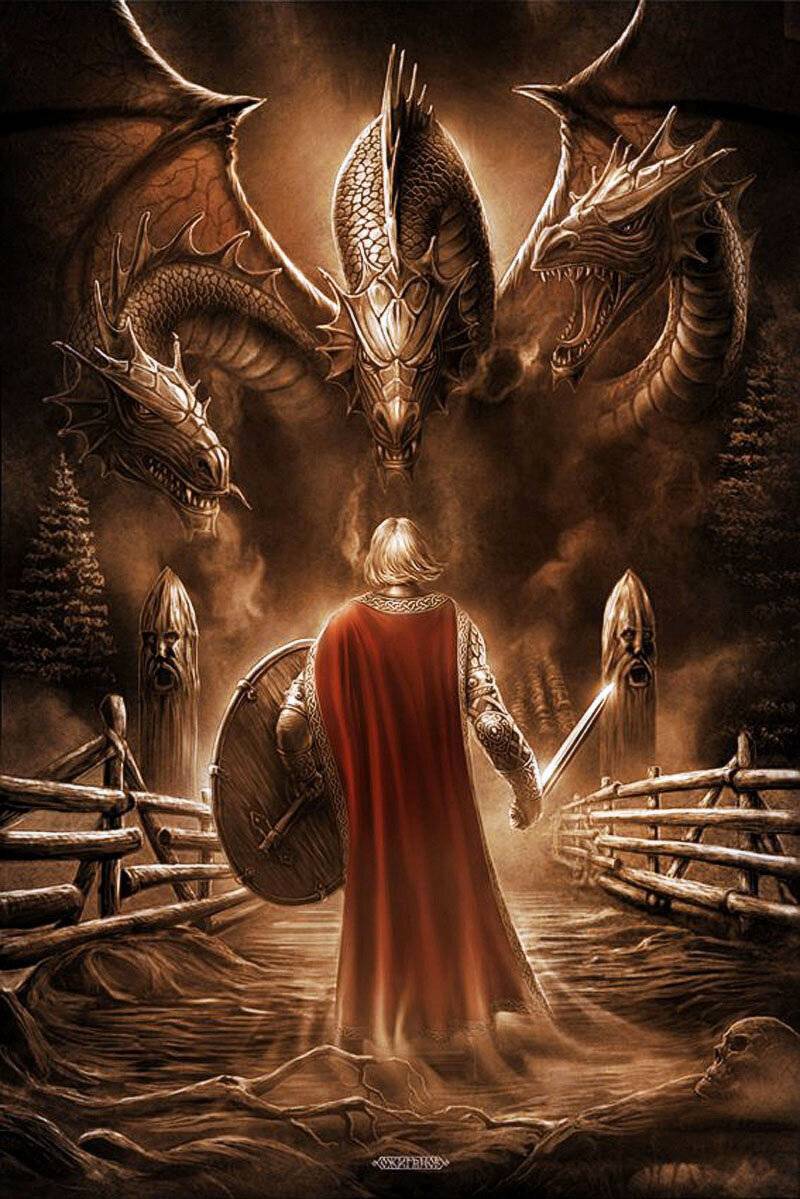
Fire Serpent
There are other Snakes that are mentioned in Slavic legends and fairy tales. For example, the Fire Serpent (Fireman, Letavets), which was described by the winged and three-headed. He also paid attention to women and girls, but only to those of them who yearned for their dead husband or groom. Most often, this Serpent, which was also called Lyubavtsev, Volokyta, Lyubostay, flew during wars, when many widows appeared in cities and villages. It was they who saw this snake, which assumed the shape of a dead man, all the rest could see only unreasonable sparks. Therefore, widows in Russia were forbidden to grieve unnecessarily for their dead husbands, while other family members tried to be around all the time to prevent adultery (probably, it is about masturbation). The priests believed that this Serpent is the wives because of the wrong rite of commemoration.
In the ancient Russian "Tale of Peter and Fevronia" (written in the middle of the XVI century by the priest Yermolai, in monasticism - Erasmus), the hero killed such a Serpent, who, contrary to custom, flew to his living brother's wife - Paul. Because of the blood of the monster that fell on Peter, his body was covered with ulcers. Only the wise maiden Fevronia could cure the prince.
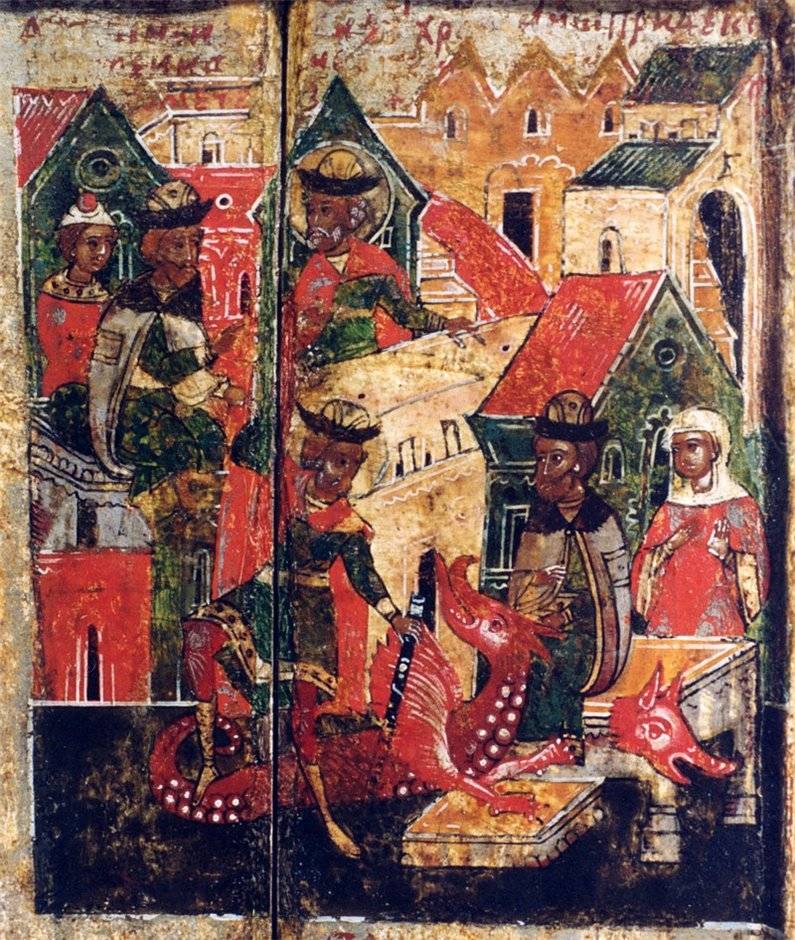
Snake "Tale of Eruslan Lazarevich"
We also see another Serpent in “The Tale of Yruslan Lazarevich” (XVII century), the main character of which at first reminds Vasily Buslaev of the Novgorod epics: “Whoever he takes by the hand - that one will pull out his hand, and who for the leg will break it out” "Princes and boyars pleaded: either we live in the kingdom, or Eruslan". However, in the future, the bogatyr still finds his forces the right application. Among his exploits - the victory over a certain "Theodul the Serpent", which, apparently, was not a real serpent, because he had a beautiful daughter who married another hero of the story - Prince Ivan.
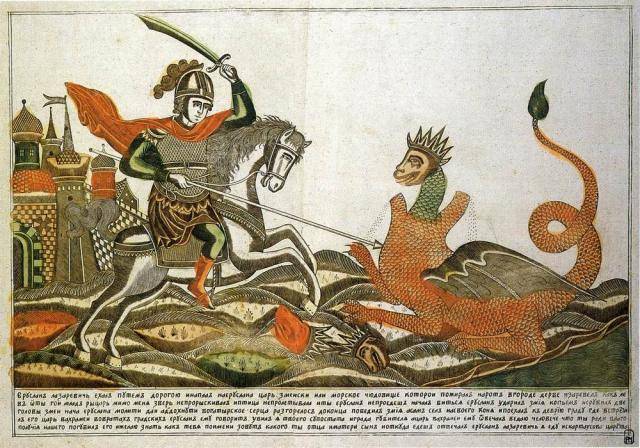
Thus, we can make the assumption that under the guise of the majority of the epic "Serpents" and monsters, there are people, albeit very unusual, distinguished by their strength, growth, or armies of the enemies of the Russian land. But there are exceptions to this rule: in the epic “Mikhailo Potyk” the hero, who, with the help of his wife and his wife, went to her grave, fights with a real snake, apparently, who is the guardian of the underworld.
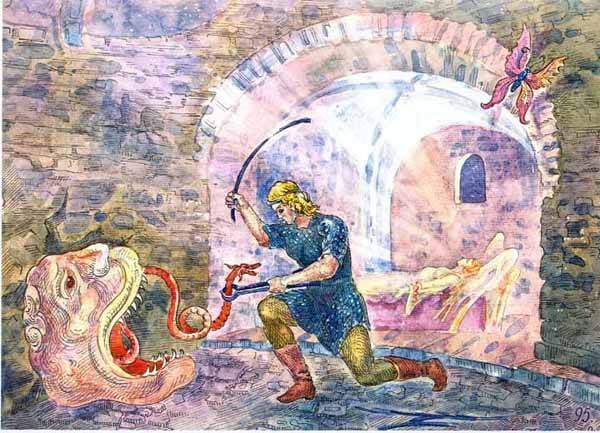
In more detail about this epic told in previous articles of the cycle.
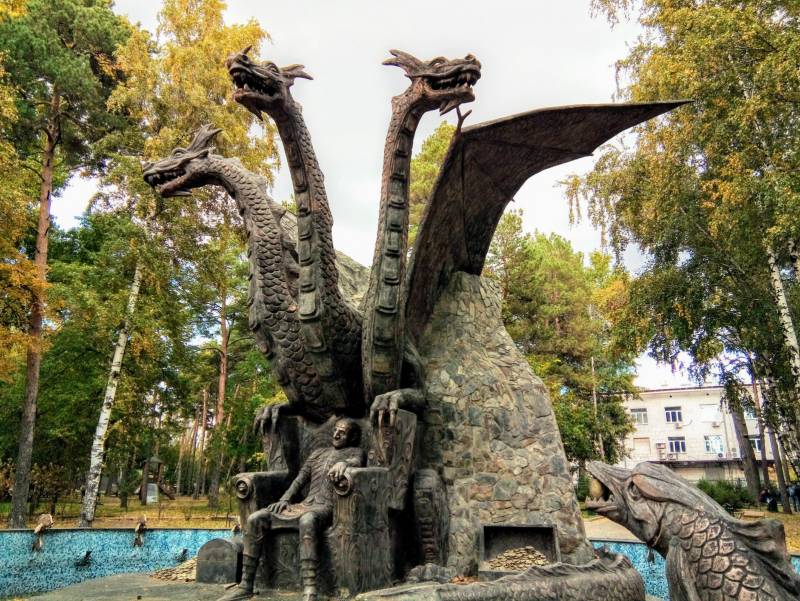
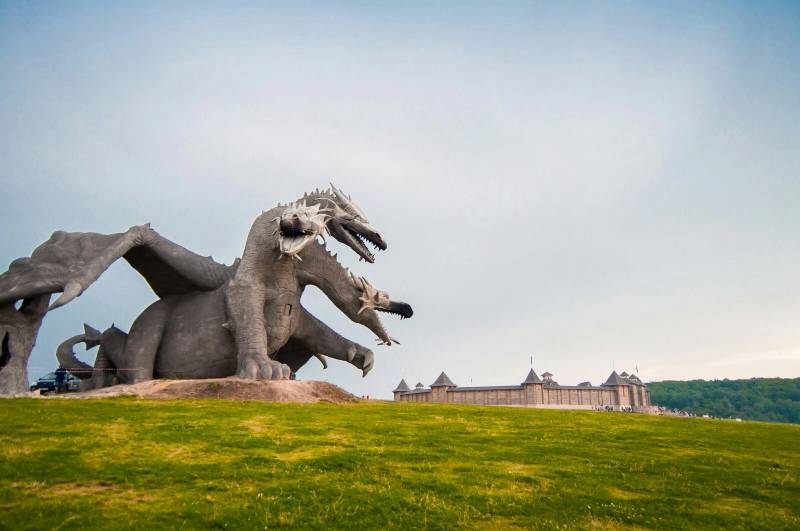
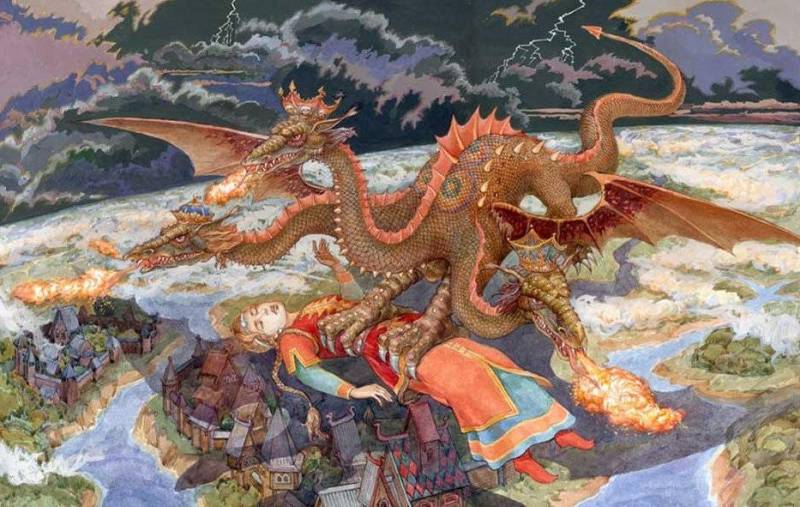
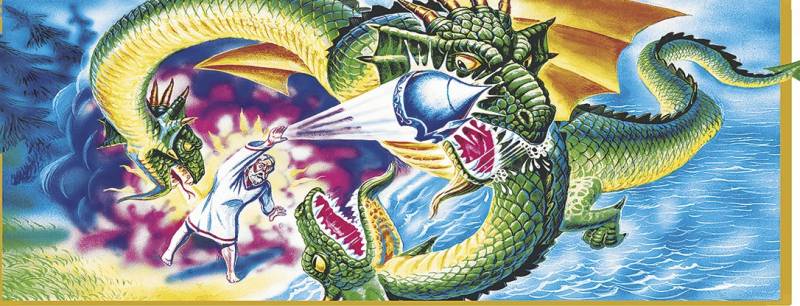
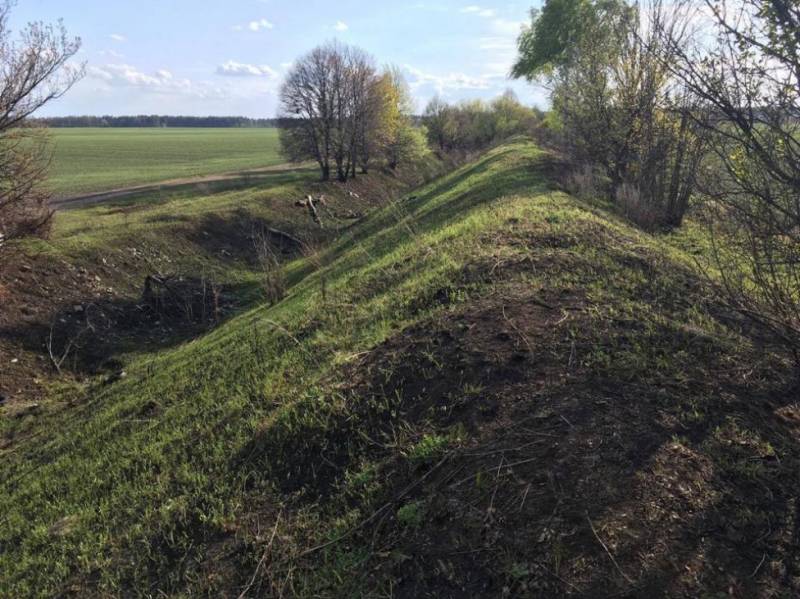
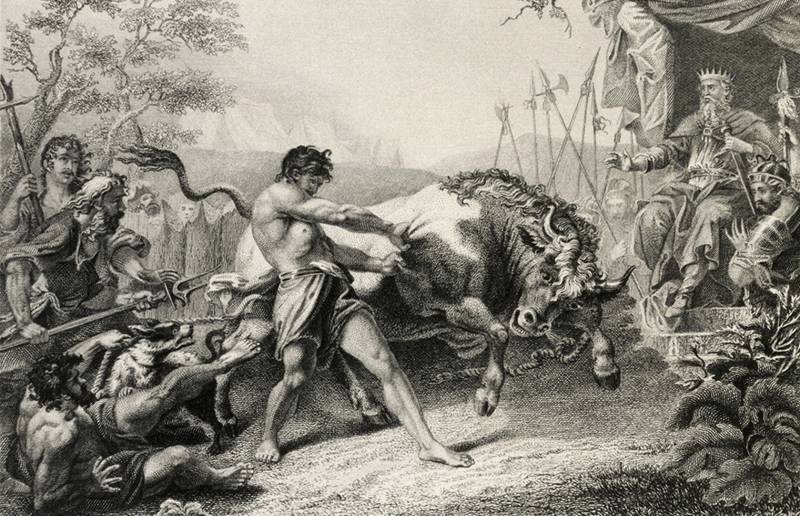
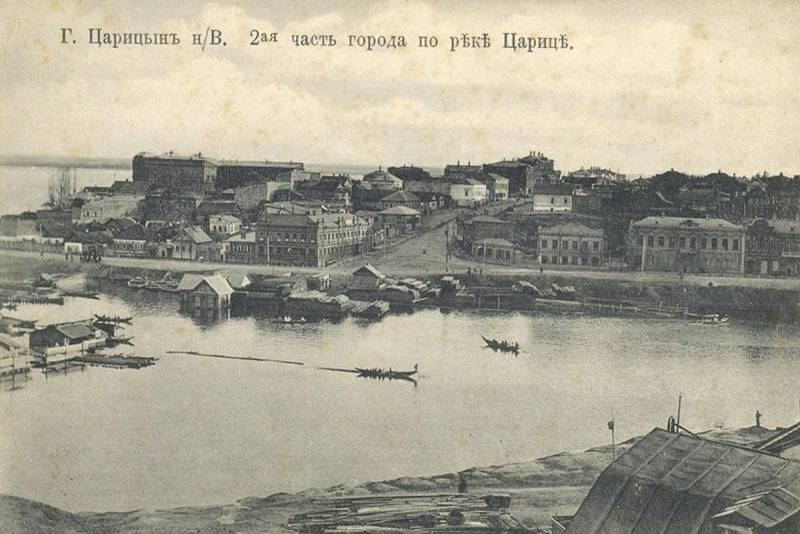
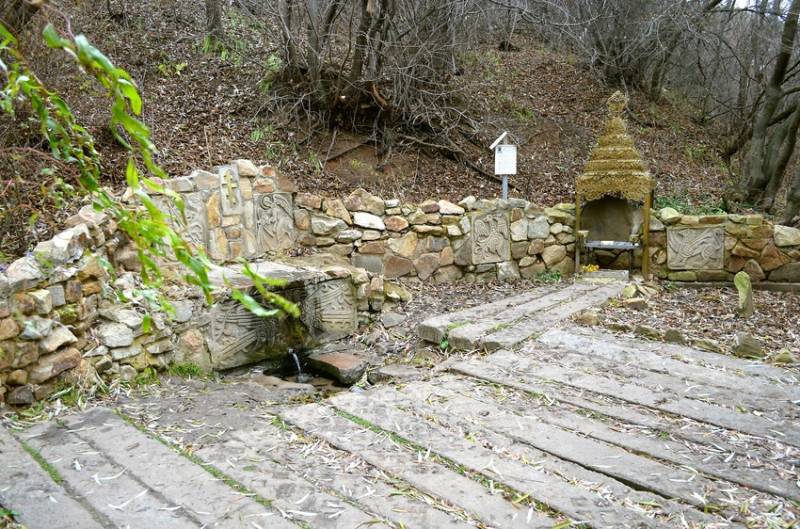
Information